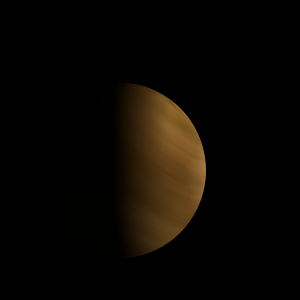|
|
Space Astro
|
Info for exoplanet "Royutana"
| Scientific (actual) data |
|---|
| Planet | ZTF-J1622+47 b |
| Planet status | Confirmed |
| Planet mass | 61 |
| Radius | 0.98 |
| Orbital period | 0.0697888 |
| Inclination | 69.4 |
| Discovered | 2022 |
| Updated | 2022-01-24 |
| Temp measured | 2700 |
| Publication | Published in a refereed paper |
| Detection type | Primary Transit |
| Mass detection type | Theoretical |
| Radius detection type | Primary Transit |
| Star name | ZTF-J1622+47 |
| Right ascension | 245.74° |
| Declination | 47.51° |
| Star mass | 0.47 |
| Star radius | 0.182 |
| Star temperature | 29000 |
| Wikipedia article | ZTF-J1622+47 b |
Back
| |
| Fictional info (?) |
|---|
| Suggested name | Royutana |
| Planet type | Huge cold gas giant |
| It is named after the deity Royutana, the goddess of destruction.
Royutana's thick atmosphere make observation of its surface impossible in infrared light, and the first detailed maps did not emerge until the arrival of the Magellan orbiter 20 years ago.
Royutana is the site of Titanic Mons, the largest volcano and second-highest known mountain in its solar system, and of Valles Marineris, one of the largest canyons in its solar system.
The volume of water detected has been estimated to be equivalent to the volume of water in Lake Superior. |
| Atmosphere | Nitrogen | 29% |
| Sulfur dioxide | 26% |
| Helium | 19% |
| Carbonyl sulfide | 16% |
| Water vapor | 10% |
| Hydrogen peroxide | 0.002% |
| Krypton | 0.00016% |
| Atmospheric pressure | 13 bar |
 |
| No known satellites |
| Google search for Royutana |
|
Website by Joachim Michaelis
|
|
|
|